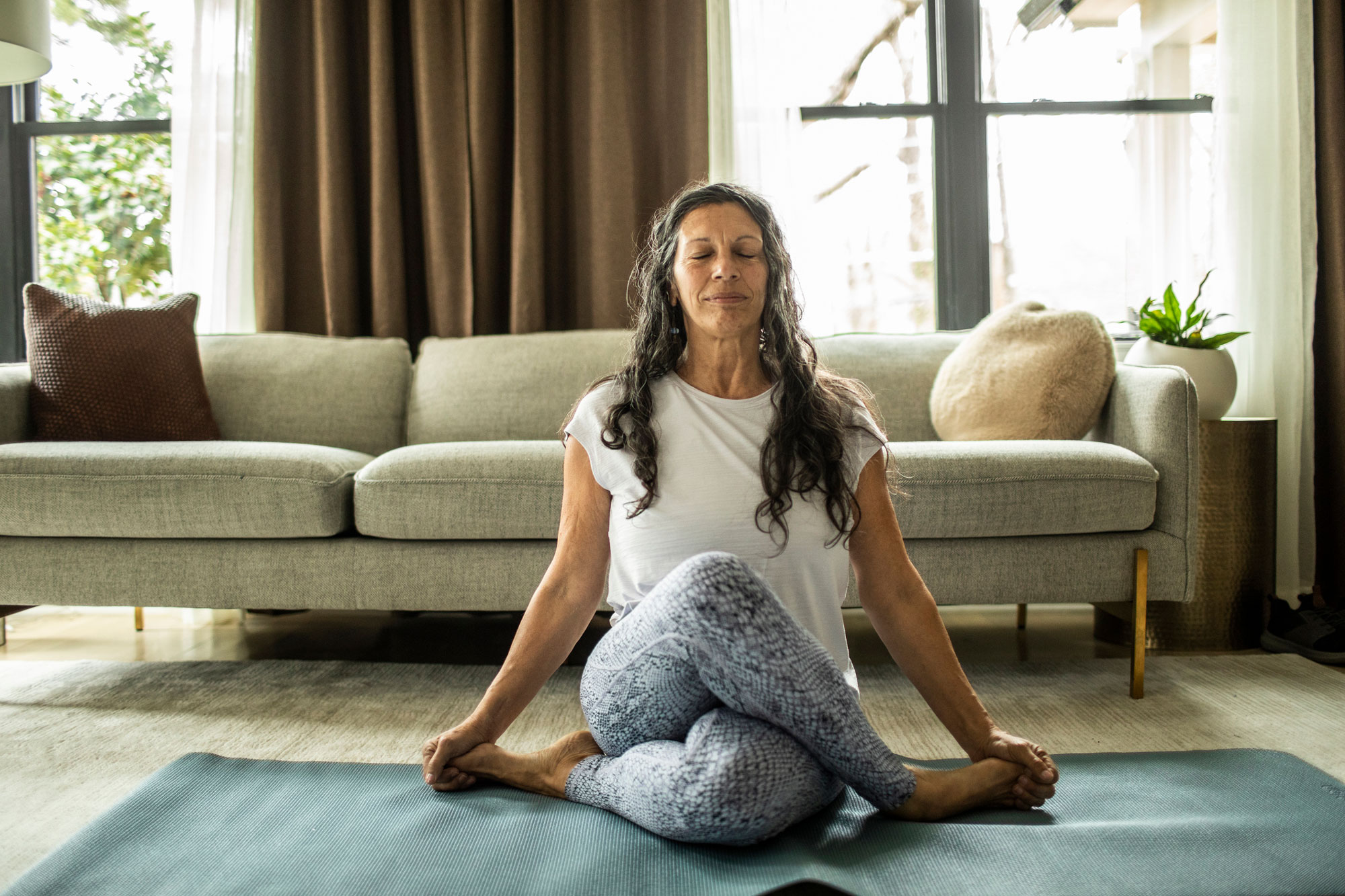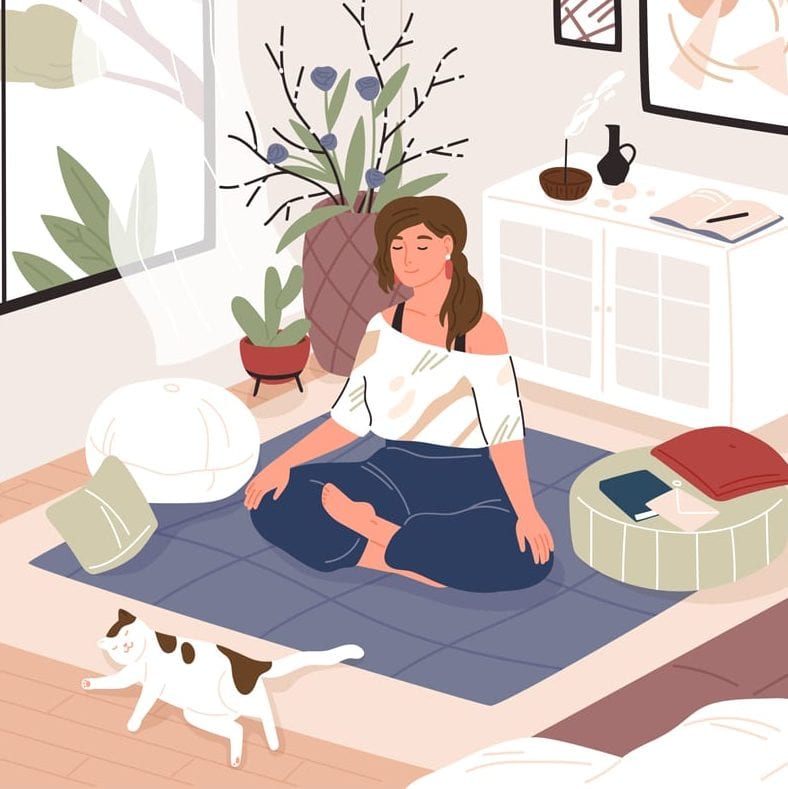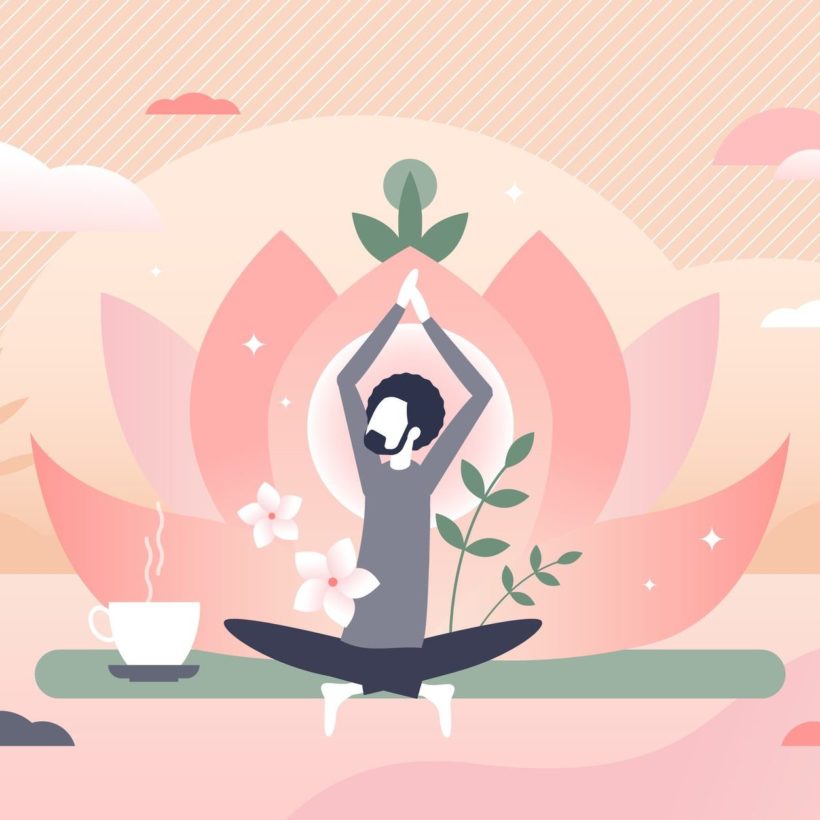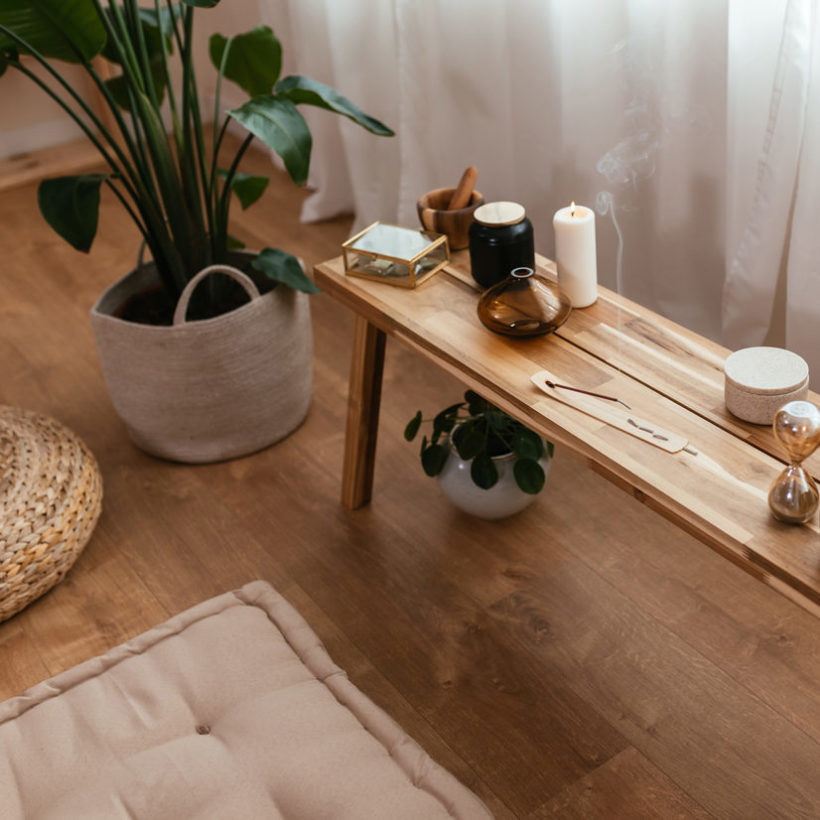It’s not pranayama. It’s not box breathing. It’s not 4-7-8. While these are well-known breathing practices, what I call “breathwork” is something totally different. An intense and active practice, breathwork is my favorite self-care modality. It’s the one that’s most healed my traumas, released my anxieties, and helped me feel more peace. I first started doing breathwork four years ago and I tell anyone who listens that it saved my life during an incredibly difficult and painful time. I was then so grateful I had breathwork to support me at the height of the pandemic. Sometimes, I was doing two sessions a day during the lockdowns in order to get calm and stay optimistic.
Stephanie Carson
is a breathwork facilitator, meditation teacher, intuitive healer, reiki, and cacao practitioner.
Meet the Experts
Stephanie Carson, one of my breathwork instructors, puts it this way, “Breathwork is an active, therapeutic meditation that helps clear stuck trauma and emotions and connect us to our truest, highest self.” Like me, Carson believes that breathwork is the most powerful and transformative practice. “It’s so simple and basic. We’re just breathing, something we do unconsciously all the time,” she explains. “But we’re harnessing it in a different way. We’re regulating our breathing in a way that over-oxygenates the system. It’s an experience that kicks your ass or makes you completely blissed out and joyous. You can never go in there expecting the same thing to happen.”
The Benefits of Active Breathwork

What you can expect is to get out of your thoughts and into your body, which is why for me and several of Carson’s clients, breathwork has felt more healing — and rapid — than traditional therapy. “I have a client who’s been in therapy for years and got to a sticking point,” she says. “With breathwork, she’s able to safely tap into things she wasn’t able to and her therapy has gotten so much more expansive.”
During the holidays, which are stressful for everyone, but particularly women and moms who do much of the emotional labor of gifts, parties, decorations, and big family dinners, a practice like breathwork can quickly bring down stress levels. “I can’t tell you how many times during the holidays that I had to breathe,” says Carson. “It really does shift your energy and your mood. It sets you up so you can go out with a fresh outlook.”
How to Do Active Breathwork
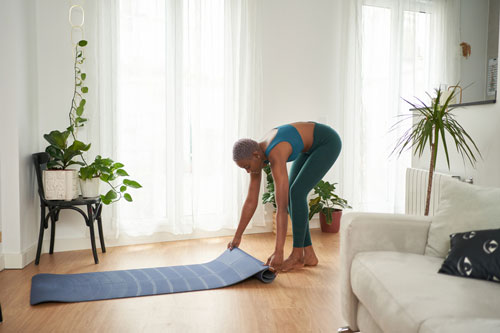
While there are many different styles under the active breathwork umbrella — Wim Hof, holotropic, rebirthing, quantum light breath, etc. — they all involve a conscious, connected breathing pattern, whether through the nose or the mouth.
These are the basics of Carson’s breathwork class:
- Lie down flat, either on a yoga mat on the floor or on your bed.
- Don’t use a pillow under your head because you want to keep your airways open.
- Do have a pillow next to you to scream into, if needed.
- Do have a blanket and socks in case you get cold.
- Start with a grounding meditation around a theme or intention.
- It’s a continuous belly breath, heart/chest breath, and exhale, all done through the mouth. Inhale so the belly fills up big, bring that breath up to expand the chest and then exhale. Keep doing that without stopping for 20 to 30 minutes.
- Midway through, you can release a scream into your pillow. You may also laugh, cry and shake out your arms, legs, hands and feet.
- Experienced practitioners can do a breath hold before final relaxation.
Different facilitators use different music, which can enhance or detract from the experience, depending on your preferences. So it’s important to find a breathwork facilitator who resonates with you. Luckily, there are many breathwork instructors across the US and the world. “Look for teachers online,” says Carson. “I teach virtually so you can find an amazing facilitator no matter what city you live in.”
What to Expect
While no two breathwork sessions are the same, there are some things you may experience. An instructor will always let you know beforehand that you may have some, all or none of these sensations:
- You may cry.
- You may laugh.
- You may get hot or cold.
- You may shake.
- Your face and body may get tingly.
- You may get tetany, which is when your hands, feet, and jaw cramp. It’s affectionately called the “lobster claw” when your hands get tetany.
- You may feel lightheaded.
- You may feel like you need to kick your arms and legs to move the energy in the body.
- You may feel like no time passed and you don’t know where you went during the session.
“It’s where your body energy is at that moment,” Carson says. “It’s just like if you work out. Some days you can run that mile in 6 minutes; other days, it’s 6:50.”
Breathwork is safe, but Carson recommends people who have any medical conditions affecting the heart or lungs — or if they’re pregnant or suffer seizures — should definitely check with their doctor before taking a class.
“It isn’t just healing. It helps you to grow and be the best version of yourself. Breathwork puts you on the trajectory to be that person.”
One thing I’ll admit is that breathwork is work. Even though it’s “just breathing,” the intensity of it can feel tiring or annoying until your mind stops fighting against it. (That usually takes about seven to ten minutes of breathing for me.) I have friends who don’t enjoy breathwork simply because it’s too much work.
That said, the work is really what has led to profound breakthroughs in my self-healing journey. My first breathwork class, I sobbed uncontrollably after the first ten minutes. I also got tetany and the tingles. For the entire first year of practicing breathwork, I cried and shook at every session until one day, I didn’t. Outside of breathwork, I felt much less anxious and my heart felt less broken. All the breathing, sobbing, shaking, screaming, and laughing released things I’d been holding onto for probably decades. The lightness, strength, and clarity I’ve gained is why I keep doing breathwork and encourage everyone else to try it, too.
“It isn’t just healing,” says Carson. “It helps you to grow and be the best version of yourself. Breathwork puts you on the trajectory to be that person.”
